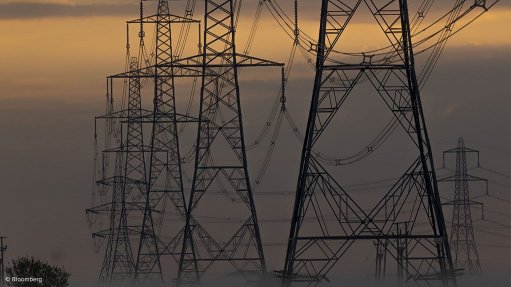Katanga plans to commission ion exchange plant in 2020
The boards of TSX-listed Katanga Mining and its subsidiary Kamoto Copper Company (KCC) have approved the construction of an ion exchange plant and, subject to obtaining the required authorisations, plan to commission the plant in the second quarter.
Katanga’s output of cobalt contained in hydroxide decreased to 2 607 t in the second quarter ended June 30, from the 3 511 t produced in the first quarter.
KCC earlier this year temporarily suspended the export and sale of cobalt owing to the presence of uranium detected in the cobalt hydroxide at levels that exceed the acceptable limit allowed for export of the product through main African ports.
On April 25, KCC resumed the export and sale of a limited quantity of cobalt that complies with both international and local Democratic Republic of Congo (DRC) transport regulations with respect to the levels of uranium.
An aggregate of 97% of the cobalt hydroxide produced in the second quarter complied with international transport regulations and was also below the acceptable limit of contained uranium allowed for export through main African ports.
KCC, together with joint venture partner, DRC State-owned La Générale des Carrières et des Mines (Gécamines), has been working with the DRC government's Ministry of Mines and the Congolese Atomic Energy Agency on a long-term technical solution in the form of an ion exchange plant.
KCC has also implemented various alternative interim solutions, both operational and regulatory, resulting in the recommencement of the export and sale of a limited quantity of cobalt.
Meanwhile, Katanga’s previously announced cobalt debottlenecking projects are expected to be completed and in full production during the second quarter of 2020. The commissioning of two filter presses was completed earlier in the year, while the third filter press is expected to be completed in the third quarter of this year.
The commissioning of the MgO plant was completed in the first half of the year.
The objective of the cobalt projects is to upgrade the existing cobalt plant to reduce bottlenecks by modification of the precipitation, thickening, filtration, drying and bagging processes.
This will align the capacity of the cobalt plant with the average planned life-of-mine cobalt production of 30 000 t/y.
Following these improvements, the cobalt circuit will be fully integrated with the existing whole-ore-leach processing facilities at the Luilu metallurgical plant.
At the end of the second quarter and in July, the recently commissioned cobalt dryers suffered mechanical breakdowns, which prevents the company from drying cobalt hydroxide until the expected completion of repairs to the dryers in the fourth quarter of this year.
Further, Katanga’s sulphuric acid, sulphur dioxide production plant and steam turbine generator project (acid plant), continues to progress in accordance with the latest construction plan.
Final design items and minor procurement items will be finalised in the third quarter of this year, and all critical civil works have now been completed for Phase 1 of the acid plant. Structural, mechanical, plate work and piping installation are progressing in accordance with the plan.
All major long-lead items have arrived on site and are being installed.
Commissioning of the acid plant is scheduled to start in the first half of 2020.
Katanga’s copper cathode production decreased to 52 514 t in the second quarter, from 57 175 t in the first quarter of this year.
The company also expects its full-year copper and cobalt production to be lower than the previously guided 285 000 t and 26 000 t, respectively.
A business review aimed at improving efficiency and recovery, raising product quality and reducing costs for this year and next is under way, with the results to be announced soon.
Comments
Press Office
Announcements
What's On
Subscribe to improve your user experience...
Option 1 (equivalent of R125 a month):
Receive a weekly copy of Creamer Media's Engineering News & Mining Weekly magazine
(print copy for those in South Africa and e-magazine for those outside of South Africa)
Receive daily email newsletters
Access to full search results
Access archive of magazine back copies
Access to Projects in Progress
Access to ONE Research Report of your choice in PDF format
Option 2 (equivalent of R375 a month):
All benefits from Option 1
PLUS
Access to Creamer Media's Research Channel Africa for ALL Research Reports, in PDF format, on various industrial and mining sectors
including Electricity; Water; Energy Transition; Hydrogen; Roads, Rail and Ports; Coal; Gold; Platinum; Battery Metals; etc.
Already a subscriber?
Forgotten your password?
Receive weekly copy of Creamer Media's Engineering News & Mining Weekly magazine (print copy for those in South Africa and e-magazine for those outside of South Africa)
➕
Recieve daily email newsletters
➕
Access to full search results
➕
Access archive of magazine back copies
➕
Access to Projects in Progress
➕
Access to ONE Research Report of your choice in PDF format
RESEARCH CHANNEL AFRICA
R4500 (equivalent of R375 a month)
SUBSCRIBEAll benefits from Option 1
➕
Access to Creamer Media's Research Channel Africa for ALL Research Reports on various industrial and mining sectors, in PDF format, including on:
Electricity
➕
Water
➕
Energy Transition
➕
Hydrogen
➕
Roads, Rail and Ports
➕
Coal
➕
Gold
➕
Platinum
➕
Battery Metals
➕
etc.
Receive all benefits from Option 1 or Option 2 delivered to numerous people at your company
➕
Multiple User names and Passwords for simultaneous log-ins
➕
Intranet integration access to all in your organisation


















